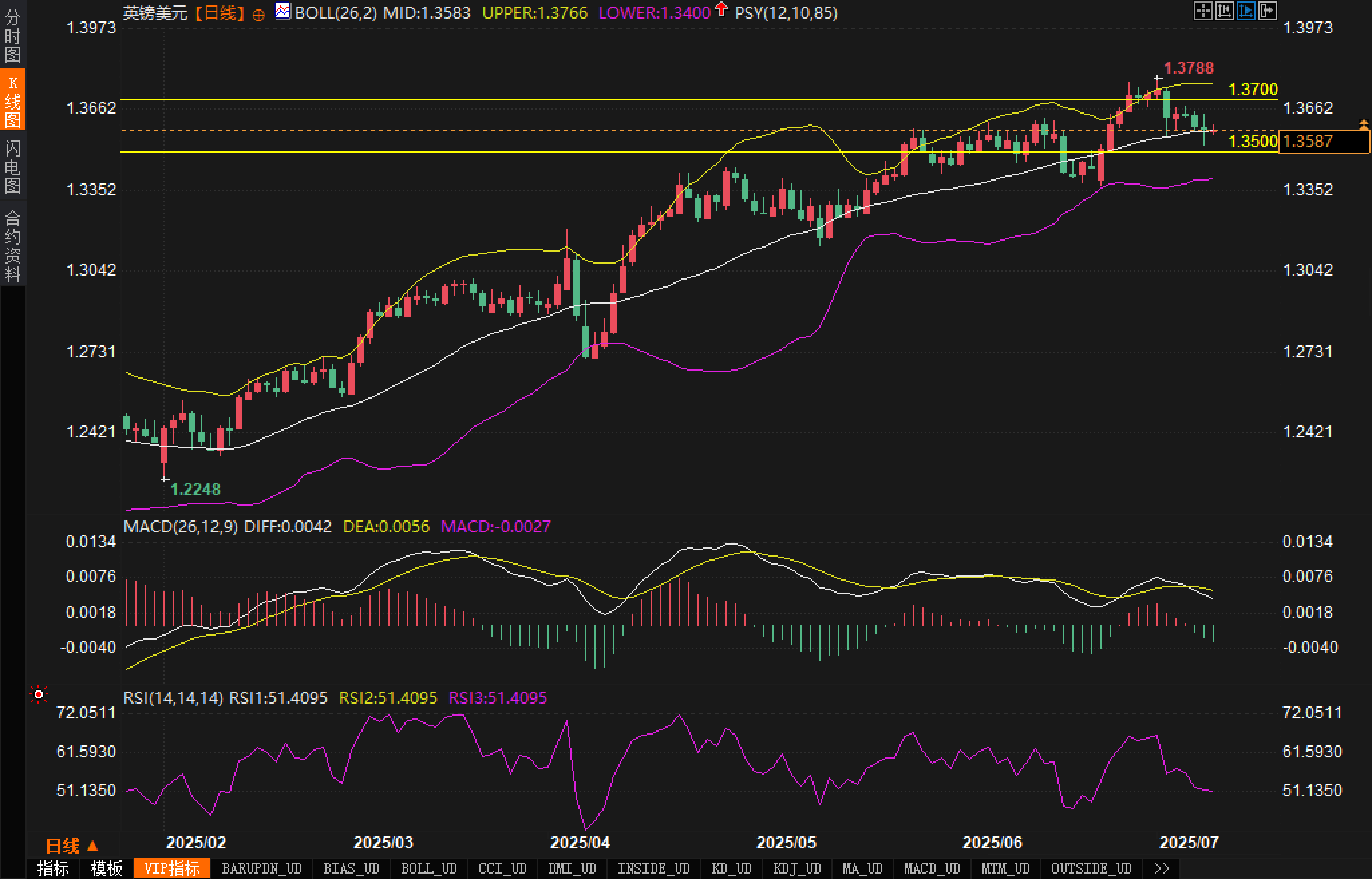Trump makes another tough statement on tariffs, can the pound hold at 1.35?
2025-07-09 20:11:37

Fundamentals
Macroeconomic divergences between the UK and the US have re-emerged. On Tuesday, US President Trump said he would impose a 50% tariff on copper and warned of an additional 10% tariff on de-dollarization. He also plans to increase tariffs on pharmaceutical products to 200% next year. Although the timetable has not yet been clarified, analysts believe that this statement has maintained the strong pattern of the US dollar.
In the UK, the Treasury expanded its welfare spending plan, breaking its commitment to fiscal self-discipline and triggering turmoil in the UK government bond market. The UK Chancellor of the Exchequer announced an increase in the National Credit Standard Allowance, which is expected to increase the government's burden by 4.8 billion pounds in the 2029-2030 fiscal year, causing the 10-year UK bond yield to climb to 4.63%, the third highest among developed economies.
In addition, the market is paying attention to the UK's May monthly GDP and industrial output data to be released this Friday, as well as the minutes of the Federal Reserve's July 17-18 policy meeting, which may become catalysts for future trends.
Technical aspects:
The current exchange rate is running sideways near the middle track of the daily Bollinger Band (1.3583), and there is a lack of directional breakthrough signals in the short term. From the Bollinger Bands, the overall situation is in a "narrowing" state, with the upper and lower tracks of the Bollinger Bands at 1.3766 and 1.3400 respectively, indicating that volatility is converging and the market is brewing a directional breakthrough.

Analysts believe that the key support is around the 1.3583 middle line and the 1.3500 integer. If it effectively falls below, it may trigger a further pullback to the 1.3350 area; while the upper resistance is concentrated at 1.3700 and the previous high of 1.3788, the former constituting a strong short-term resistance.
In terms of MACD indicator, the DIFF line is slightly lower than DEA, and the histogram shows an enlarged green column, and the momentum is weakening, suggesting that there is a risk of downward exploration in the short term; the RSI indicator remains at 51.40 and has not yet entered the oversold area. Market sentiment is neutral and weak.
Based on the above analysis, we believe that the current GBP/USD exchange rate is in a consolidation pattern, and the direction selection may need to wait for guidance from macroeconomic events.
Market sentiment observation
The market is currently in a typical wait-and-see state. The US dollar remains strong due to Trump's policy uncertainty and risk aversion, but there has been no obvious breakthrough yet; for the pound, fiscal risks have intensified and there is a lack of economic data, so the overall sentiment is cautious. Traders tend to wait for FOMC minutes and UK GDP data to find clues to the direction.
Outlook
Bullish Outlook:
Analysts believe that if the UK's GDP and industrial output in May exceed expectations and the FOMC minutes show a dovish tendency, the exchange rate is expected to break through the 1.3700 resistance line and challenge the previous high of 1.3788. Traders are concerned about whether the pressure near the upper track of the Bollinger Band 1.3766 will constitute a breakthrough node. By then, a bullish pattern of "oscillation bottoming-platform breakthrough" may be formed technically.
Bearish Outlook:
On the contrary, analysts believe that if the Fed continues to be hawkish or the UK economic data is weak, the exchange rate may break below the 1.3500 support range and seek support at 1.3400 (the lower Bollinger Band). If it falls further, the market may start a new round of decline and retreat to 1.3350 or even the previous shock starting point of 1.3040.
- Risk Warning and Disclaimer
- The market involves risk, and trading may not be suitable for all investors. This article is for reference only and does not constitute personal investment advice, nor does it take into account certain users’ specific investment objectives, financial situation, or other needs. Any investment decisions made based on this information are at your own risk.










